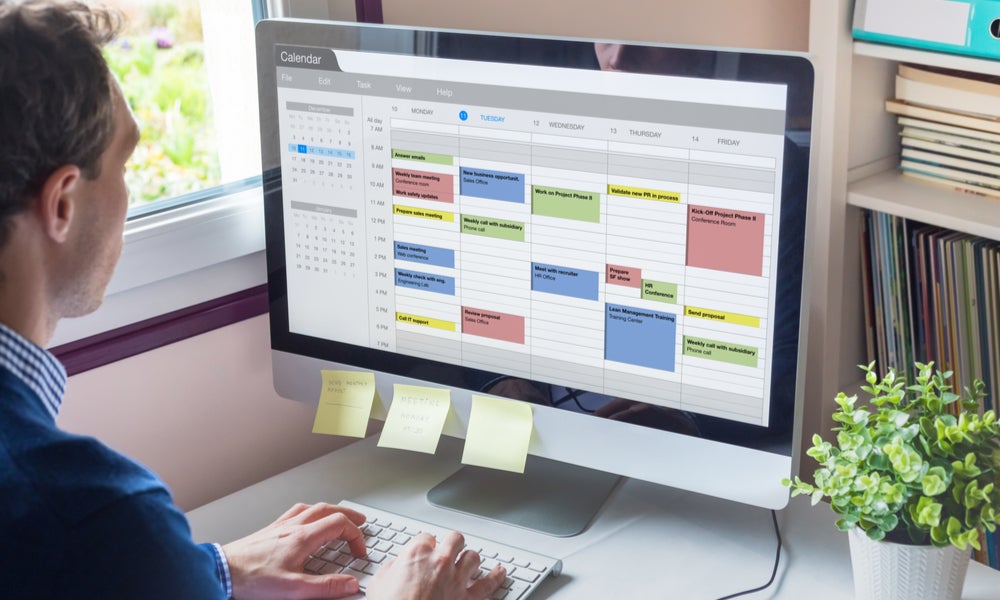5 tips to become a more resilient leader in challenging times
There are ways you can increase your resilience as a leader, but bouncing back doesn’t necessarily mean a return to normal, according to AGSM @ UNSW Business School
In challenging times, the word resilience can become a management buzzword. If you look it up in any dictionary, you'll see several variations of the phrase 'bouncing back from adversity'. But what does that actually mean in a leadership context, and how can you increase your own resilience as a leader?
According to Adjunct Faculty member at AGSM @ UNSW Business School Melanie Fisher, a resilience expert and occupational psychologist, bouncing back doesn’t necessarily mean a return to normal. "On the face of it, bouncing back suggests we would continue as normal, but that's not what resilient leadership is about,” said Ms Fisher. “It’s about the ability to use challenging or difficult experiences to learn and grow, to adapt and accept new circumstances and apply what we have learnt to see new opportunities and navigate challenging times with greater ease in the future."
Ms Fisher also said that organisations who cultivate resilient leaders across leadership teams outperform those who don't in a number of areas. "We tend to see organisations who develop resilience increase employee engagement at all levels, reduce absenteeism and presenteeism, improve productivity and, ultimately, increase profitability," explained Ms Fisher, who leads the AGSM @ UNSW Business School Virtual Learning Course on Leading with Resilience.
A leader who is resilient embraces failure and can see things from multiple perspectives. They are aware of their own strengths and weaknesses and are enduringly perseverant, yet know when to give in. They also possess future-focused foresight and orientate toward their goals accordingly. So, when it comes to challenging times, they are better equipped to stabilise their teams and hold onto their business objectives more successfully.
"Resilient business leaders are role models for positive behaviour and optimism to those around them and can help others navigate through disruption. This is particularly critical now when leaders are being called upon to not just lead business as usual, but also help their teams to address mental health and well-being issues related to the current climate," Ms Fisher continued.
"The most resilient leaders know how to share their own experiences and adversities with their teams in a way that focuses on finding solutions." She also highlighted that it's not about being a stalwart throughout challenges, it's about knowing how to frame challenges with your team in a way that you can also role model solutions.
Fisher shared her top five tips for building resilient leaders while working in a virtual environment:
1. Practice mindfulness and self-care
When we talk about resilient leadership, it's often about how we guide others through adversity, but according to Ms Fisher, truly resilient leaders understand and leverage the benefits of self-care. "Whether it's meditation, deep breathing or exercise, the key to truly resilient leadership is to look after your own wellbeing, so that you are in a position to look after others," she said.

Resilient leaders tend to choose activities where they are in the flow and fully focused on the present. This gives our brain a much-needed break and enables us to form new neural pathways which focus on presence and engagement rather than rumination and stress.
"If you have experienced a hard day, maybe a difficult conversation or things that didn’t go to plan, experiencing positive emotion can help us to overcome difficult emotions and give us the energy to persevere. You can't pour from an empty cup, so as a leader you need to maintain your own wellbeing in order to look after others," said Ms Fisher.
2. Carve out time for yourself
In today's virtual environment, a leader can often feel like they need to be available to their teams constantly, whether on the phone, chat or video channels, but Ms Fisher said this can be exhausting and it's not reflective of the normal working environment.
"If you think about a normal day in the office, you'll have time away from your desk and your team, whether it be for meetings, lunch or just grabbing a coffee," she explained. "It's critical you make time for yourself during the day to concentrate on what you need to get done. If your team know you aren't available during a certain window each day, they will be able to work around it, and you can focus better. It's essential to corral some time to focus on other areas – you need to manage your cognitive energy."
She said this goes both ways; your team members need time to focus too. "It is also important to be mindful that your team may not necessarily want so much contact either and need space to cultivate their own resilience."
3. Demonstrate empathy, but find the balance
Resilient leaders tend to have high emotional quotients, and this is often linked to an ability to show empathy. But while Fisher said empathy is a great leadership trait, you can also have too much.

"Empathy towards your staff and their current situations is, of course, important as we navigate changing and often challenging circumstances, but it's also important to think about where to draw the line. You want to make sure you don’t encourage your staff to become so reliant on you that it becomes difficult for you to navigate. It's a fine balance, but something that resilient leaders do well."
4. Manage energy instead of time
According to Fisher, a resilient leader knows how to manage their energy effectively and minimise depletion.
In a remote working environment, additional flexibility can provide the opportunity to focus on managing your energy levels instead of your time. "The change in our working situation does have the benefit of some flexibility. Without long commutes, many of us are able to work different hours and still achieve the same results. This means we can work around when we have the most energy and structure our days accordingly."
As a leader, it's also important to think of this in terms of your meeting schedule. "For many people, the optimum time to get work done, when their energy levels are at their highest, is in the morning. Yet, many of our regular catch-ups and meetings also take place at the start of the day. If you want to get the best out of yourself and your team, it's best to avoid scheduling meetings at times where you may just have more cognitive energy to focus on tasks that require deep concentration."
5. Stick to a schedule
Although the flexibility of remote working can be a great thing, Fisher said it can also blur the lines between personal and working hours. "For many leaders, it might be possible now to work different hours, and the other things going on in life, such as home-schooling children, can make this an attractive option," she said.

"But regardless of how you structure you working day, boundaries are important and it's critical to have a schedule in place that sets out when you will work and when you won't. If you don't do this, work can quickly take over your life, and this is one of the fastest routes to burnout," she added.
According to Ms Fisher, when it comes to your own leadership, it is possible to start making small changes to your habits that will help you build your resilience but, it's important to be aware that it must be an ongoing pursuit. "The question is not how much resilience you have, there is no fixed amount, but rather it is a skill set that you build throughout your life. You can think of it like a muscle that you must keep working on to build and stay in shape," she said.
To learn more about building resilience skills to lead more effectively in a virtual environment visit AGSM @ UNSW Business School's Virtual Learning Course on Leading with Resilience.
